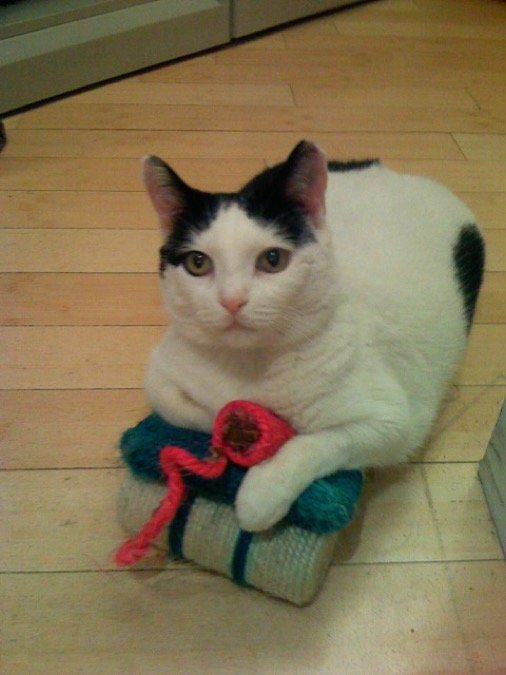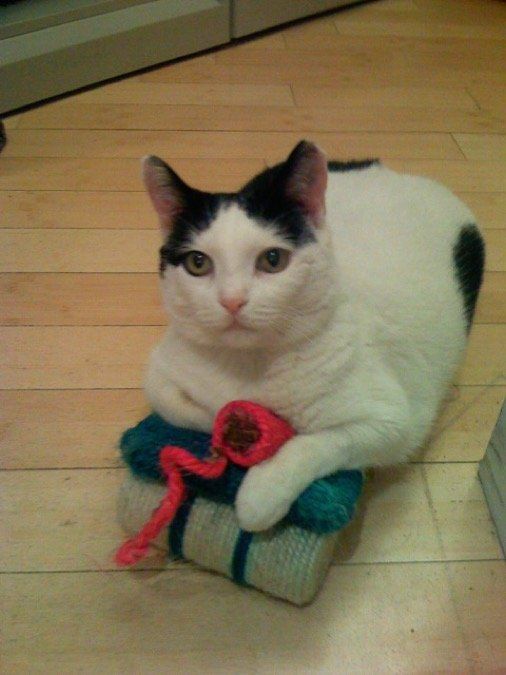Most people have some familiarity with the concept of a blood transfusion, perhaps by donating blood to the local Red Cross, or possibly as a recipient during a hospital stay. Thankfully, most cat owners have very little experience with transfusions when it comes to their pets.
Transfusions are infrequently performed in general veterinary practice, but as an increasing number of cat owners become more willing to pursue state-of-the-art veterinary diagnostics and therapeutics for their beloved companions, advanced procedures such as blood transfusions are becoming more commonplace.
When they’re necessary
There are several reasons why a cat might require a transfusion, with anemia (a decreased amount of red blood cells) being the most common by far. Some veterinary clinics have a pet “hospital cat” that lives at the clinic and earns its keep by occasionally functioning as a blood donor in those rare times of need.
For years, my hospital employed “Topeka,” a black and white domestic shorthaired cat who, besides providing us with years of joy and affection, saved many lives by donating her red blood cells to desperately anemic felines in need.
Blood donors should be healthy adult cats of agreeable temperament (for easy handling and restraint), preferably in the age range of two to eight years old. Ideally, the cat should weigh 11 pounds or more, be shorthaired and be of lean body stature.
The donor’s PCV (packed cell volume, a measure of the percentage of the blood that is comprised of red blood cells) should be greater than 35 percent. (The normal range for a typical cat is 29 to 48 percent.) The cat should test negative for the feline leukemia virus (FeLV), the feline immunodeficiency virus (FIV), toxoplasmosis and mycoplasmosis (a red blood parasite). Blood should not be collected more than once every four to six weeks from an individual donor.
In a general practice setting like my own, transfusions are performed using whole blood, because that’s what we obtain from our donor, Topeka. However, the ability to fractionate whole blood into its component products has made it easier to treat a variety of conditions if a blood donor isn’t readily available.
Veterinarians now have access to fresh or stored whole blood, packed red blood cells (pRBCs), fresh-frozen plasma (FFP) and platelet products through veterinary blood banks, local emergency clinics or referral centers.
Blood is sterilely collected into commercially prepared blood bags containing an anti-coagulant. The blood can be used immediately, or it can be stored in a refrigerator for several weeks until needed. As noted above, fresh whole blood can also be separated into its component parts. Whole blood contains everything: red blood cells, serum proteins, clotting factors and platelets. Because the most common reason for a transfusion is severe anemia, packed red blood cells (pRBCs) are often the most appropriate product.
The advantage of using pRBCs is that you are administering the same amount of red blood cells as that found in a unit of whole blood, but it is in a much smaller volume, making it safer for animals with concurrent heart or kidney disease.
Blood types of cats
Cats have specific blood types, similar to humans: Type A, Type B and Type AB. However, unlike humans, there are no type O cats. The majority (99 percent) of cats in the United States are type A. In Europe, Japan and Australia, higher percentages of cats with Type B blood are found. Some breeds of cats (for example: British Shorthair, Devon Rex, Cornish Rex, Exotic Shorthair, Abyssinian, Japanese Bobtail, Persian, Himalayan, Somali and Sphinx) have a higher percentage of Type B blood.
Although purebred cats are most likely to be Type B compared to non-purebred, it is interesting to note that Siamese cats are reported to be 100 percent Type A. Cats with blood Type AB are extremely rare. In 29 years of veterinary practice, and having performed countless blood typing procedures, I have still not encountered a type AB cat.
How it’s done safely
photo courtesy of Arnold Plotnick


Transfusing blood products into a cat isn’t a benign procedure. The feline immune system can react dramatically to blood components, with life-threatening consequences. The serum of cats with Type A blood possesses antibodies that react against Type B red blood cells. Conversely, the serum of cats with Type B blood possesses antibodies against Type A red blood cells.
In Type A cats, the amount of antibodies against Type B blood is relatively low, so accidentally giving Type B blood to a Type A cat will typically result in a mild reaction, with the transfused Type B red blood cells undergoing attack and destruction by the immune system of the recipient within two to three days. However, the amount of anti-A antibodies in the blood of a Type B cat is very high, and administering even a small amount of Type A blood into a Type B cat can cause acute, dramatic destruction of the transfused red blood cells, resulting in a potentially fatal transfusion reaction. It is therefore imperative that blood typing be performed before any transfusion is undertaken.
Understanding crossmatching
To be even safer, it is advisable to perform an additional procedure called crossmatching to further minimize the risk of a transfusion reaction. A detailed description of crossmatching is beyond the scope of this article, but it involves mixing donor red blood cells with serum of the recipient (major crossmatch) and mixing donor serum with recipient red blood cells (minor crossmatch) and observing the reaction.
Once the compatibility of the donor and the recipient has been confirmed, the transfusion can be performed.
Initially, the blood should be administered slowly. If no adverse effects are witnessed after 30 to 60 minutes, the rate of administration can be increased. The rate depends on the urgency of the cat’s condition. Cats that are in shock from acute blood loss require rapid blood administration. Cats with cardiac disease are at risk of fluid overload and congestive heart failure, and may require a much more judicious rate of administration.
A typical transfusion is completed in four to six hours. In most cases, the goal of the transfusion is to increase the patient’s PCV sufficiently to reverse the signs of anemia. A reasonable aim is to achieve a PCV of 20 percent, although this isn’t always possible.
Becoming more popular
Although blood transfusions are infrequently performed in general practice, the increased availability of feline blood and blood products and the willingness of cat owners to pursue more advanced care for their pets has made this often life-saving procedure more common.
By transfusing a patient only with the blood component that is needed, knowing the blood types of the donor and recipient and performing a crossmatch right before the transfusion, most can be performed effectively and safely.




